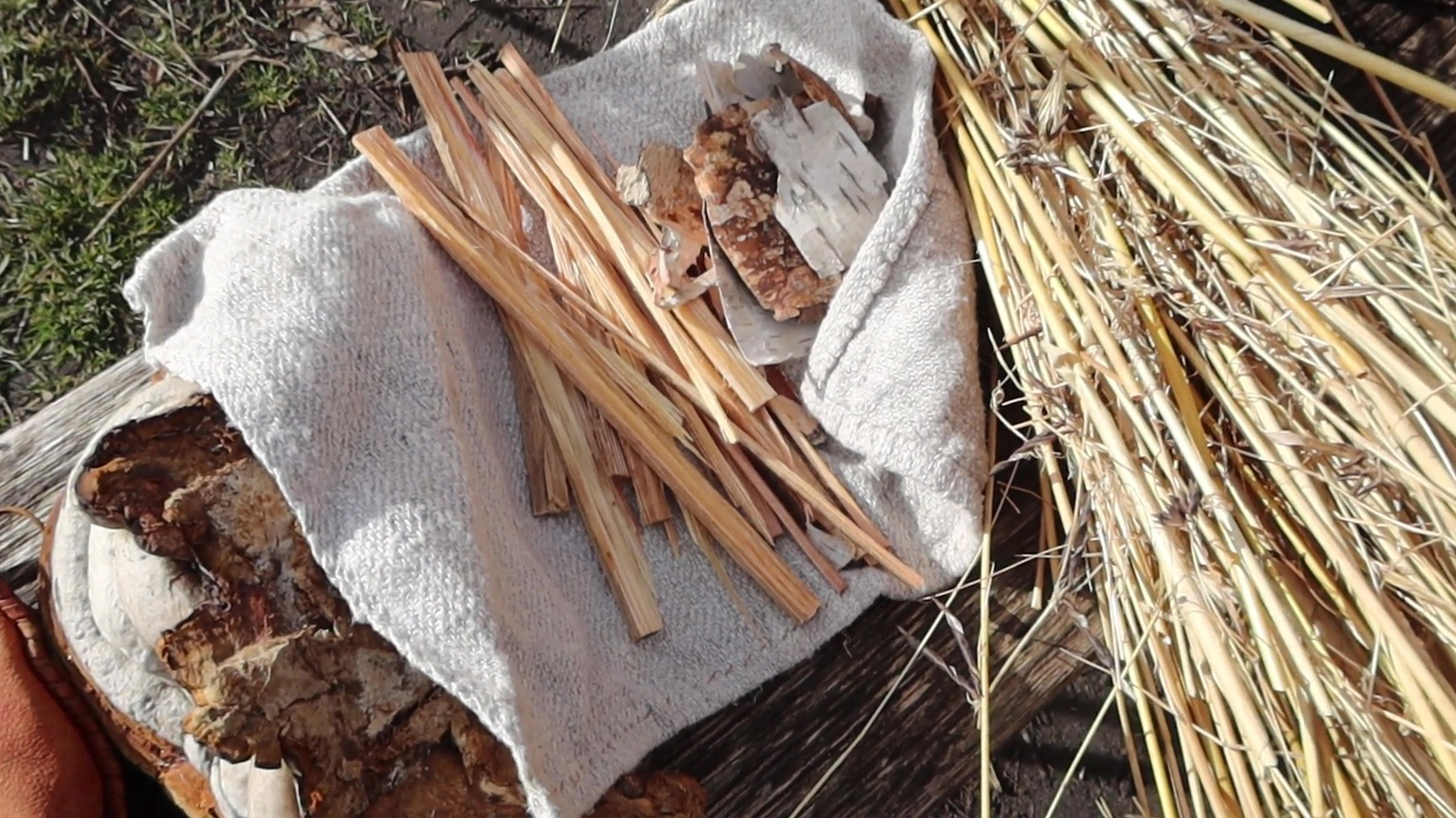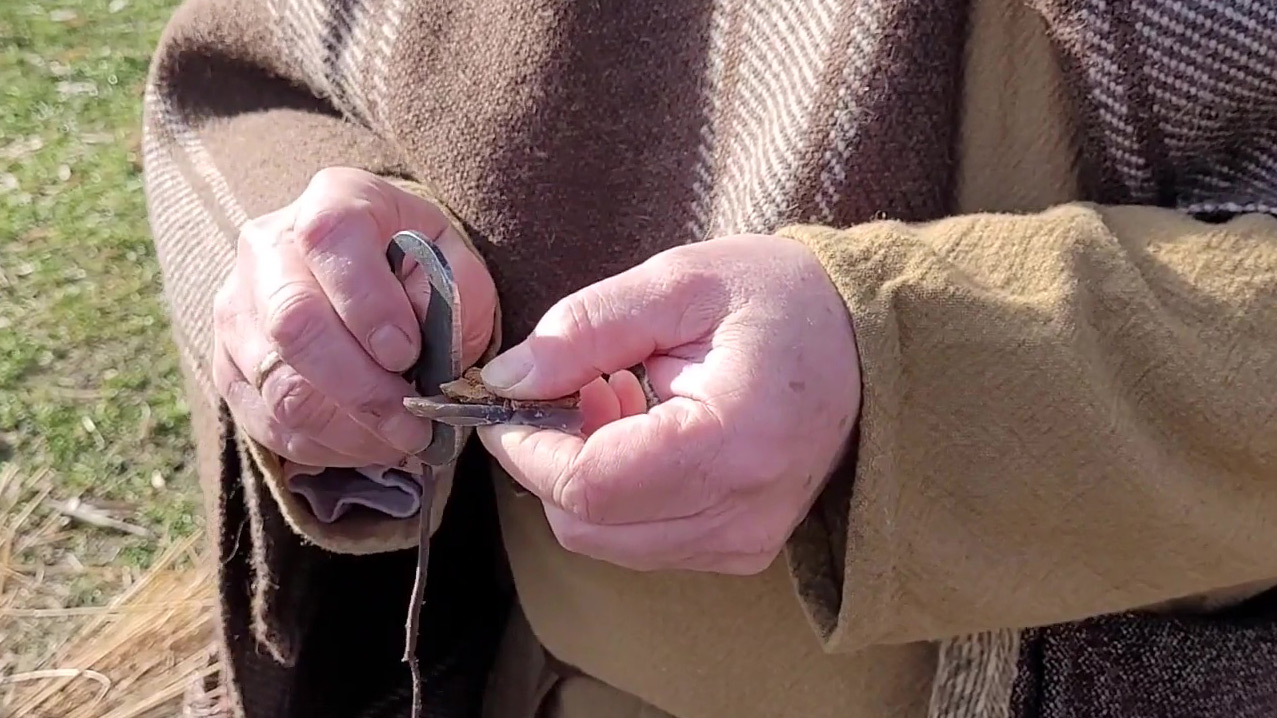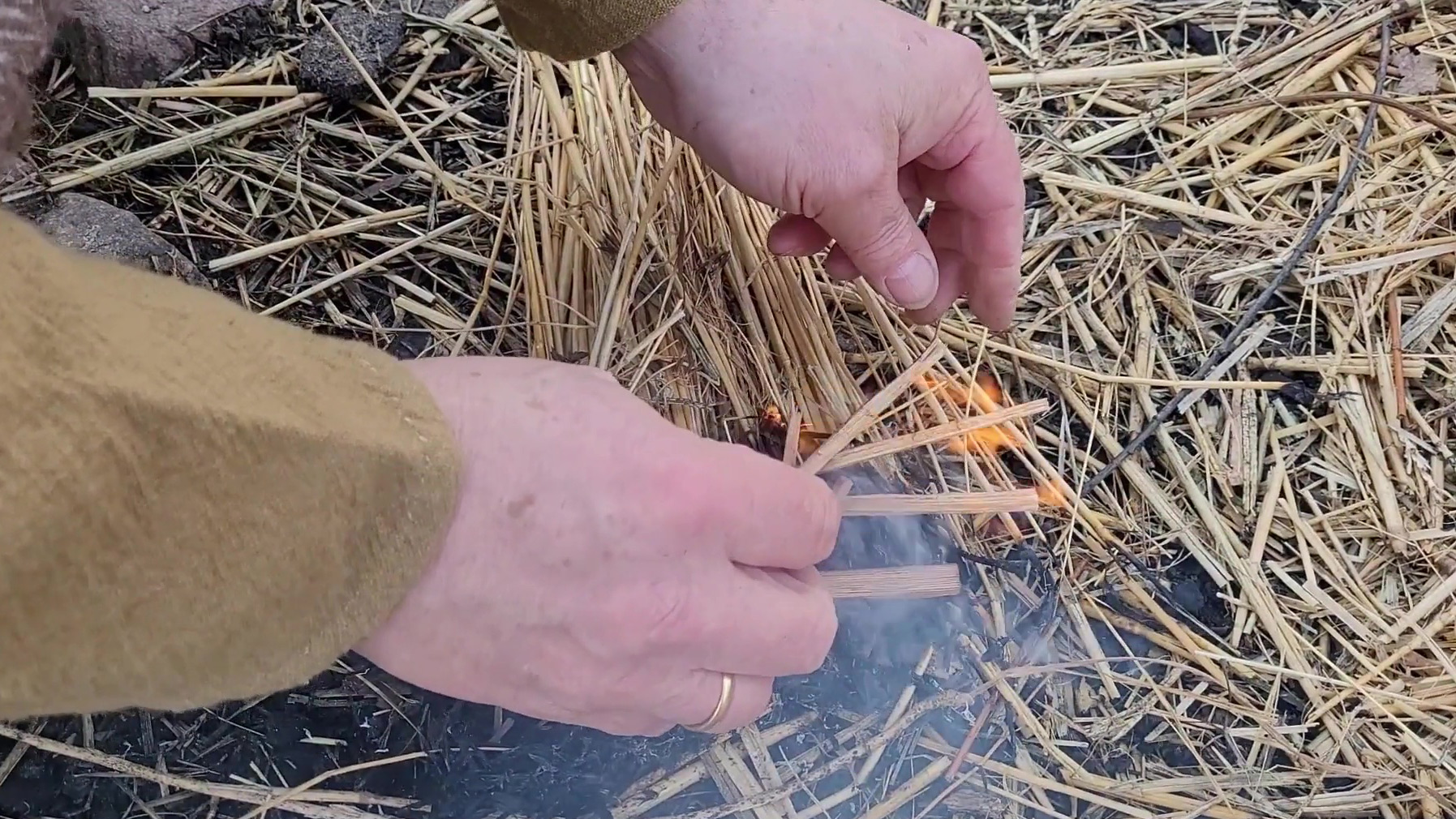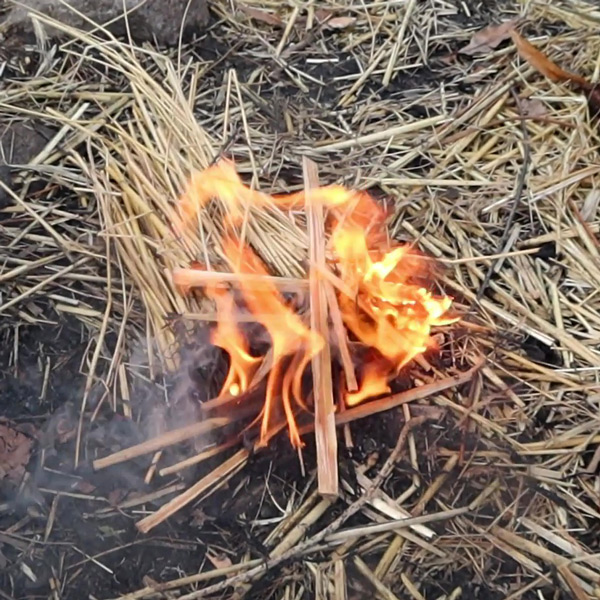Making Fire at Museumsdorf Duppel (DE)

Name of the craft in English: Making Fire
Name of the craft in local language: Feuer machen
Local Language: German
Type of craft:
Archaeological (craft is no longer widely practised, mainly based on archaeological sources)
Category of craft: Fire
Short description of the craft:
The fire steel is grated with speed along the edge of the flint stone at the place where the tinder is being held. Some of the sparks will be caught in the tinder and the tinder will start to smolder. By blowing into the smoldering tinder, flames develop.
What is the historical /archaeological time period of the original craft:
Iron Age, Roman Era, Viking Age, Early Middle Ages, Late Middle Ages
What years was/is the craft practiced: 800 BC - 1800 AD
Primary crafter: Stefan Schirmacher (DE)
Crafter's role in the documentation process: Demonstrator (storyteller)
The crafter has been practicing this craft for: 10-15 years
Is practicing this craft the main occupation of the crafter: No
What is the main occupation of this crafter: Carpenter
Does the crafter practice any other crafts: Yes
Other crafts: Tar production, wood working
The crafter's motivation for learning this specific craft:
Personal interest, Learning something new, Developing the skillset (a sense of achievement), Producing (unique) things
Does the crafter have regular contact with colleagues: Yes
Which describes the crafter's habitual working area best: Museum
How did the crafter learn this craft:
Self-taught (education without guidance)
Does the crafter teach this craft: Yes
Where / how the crafter teaches: The crafter teaches one or more persons (informal)
This process is: To produce something from scratch
Which of these options best describes the work area during this craft activity: Museum
Name each working technique (keyword):
• Striking fire steel against flint • Producing sparks • catching sparks in flammable material • creating flames from smoldering tinder • using wood to make a larger fire
Phase 1

Number and name of the phase:
1. Preparation
Description of this phase:
The lightly flammable material (Straw, birch bark, small pieces of wood) a laid out in preparation. About 1cm² of the material made from the tinder fungus is placed on top of the sharp edge of the flint stone, being held in place by a finger in order to catch the sparks.
Time: 5 min
Tools used in this phase: No
Materials used in this phase:
Flintstone, Tinder fungus, Straw
Phase 2

Number and name of the phase:
2. Striking and catching sparks
Description of this phase:
The fire steel is grated with speed along the edge of the flint stone at the place where the tinder is being held. Some of the sparks will be caught in the tinder and the tinder will start to smolder.
Time: 3 min
Tools used in this phase:
Firesteel
Materials used in this phase:
Flintstone, Tinder fungus
Phase 3

Number and name of the phase:
3. Creating flames using air and straw
Description of this phase:
Blowing with the mouth will make it smolder stronger. The smoldering tinder is then placed inside some lightly flammable material like straw. With blowing, natural wind or mowing the straw forth and back creating a draft, the smoldering tinder should ignite the surrounding material.
Time: 5 min
Tools used in this phase: No
Materials used in this phase:
Straw, Tinder fungus
Phase 4

Number and name of the phase:
4. Starting and building the fire
Description of this phase:
Once there are open flames, small pieces of wood can be added to the straw. Once ignited the fire can be build up with more wood.
Time: 10 min
Does the crafter model this craft activity on historical or archaeological sources (is the product an exact replica of a specific object): No
Did the crafter diverge from historical/archaeological accuracy to adapt the process: No
Has the crafter developed new techniques or improved the activity over time: Yes
Describe changes to the craft activity:
The correct movement of the hands needs practice and will get better over time. Also the choice and quality of materials is important, they need to be of high quality and very dry to make it easy.
Describe changes to the final product or outcome:
The process takes less time
Describe the reasons for these changes:
A higher degree of experience means a more effective workflow
Has the crafter identified any gaps in their knowledge or experience: Yes
Describe what the crafter would like to learn about the archaeological/historical backgrounds for the craft activity:
More archaeological and historical sources about the process.
Describe what the crafter would like to learn about the practical craft activity:
Trying out alternative tinder materials.
Please describe the motivation:
As his main craft was making pitch and tar, lighting a fire the medieval way was important and part of the it for me.
Describe the crafter's approach to a tidy workshop, hygiene and other best practices:
All materials should be kept dry and tidily stowed away, at the same time everything should be in easy reach, as it is needed on a regular basis.
Describe the crafter's approach to clean-up and disposal of waste products:
There is no waste, the fire needs to be well tended of course and not left alone while it is burning.
Describe any by-products of the craft activity that could have further use:
Heat, smoke, light, ash

Through this craft we produce fire, which can be used for different purposes.
Name of the product in English: Fire
Name of the product in local language: Feuer
Describe the product:
There is no product as such, although the fire itself can be used for different purposes.
What are the outcome or product's purposes:
Practical use, Decorative use, Experimental purposes, Educational purposes
Describe how the product or outcome is used:
There are many purposes of making fire. For cooking, keeping warm, different crafts, it was one of the most essential activities before electricity.
Describe who typically uses the product or outcome:
Crafters, educational staff, living history groups
In which context is the product or outcome typically used:
Experimental, educational, for demonstrations, craft activities
When Experimental purposes, add additional context here, eg., name of the project or program:
Fire is a basis for many experimental activities, like tar production.
What happens with the product or outcome? Is it distributed and how:
Not distributed

